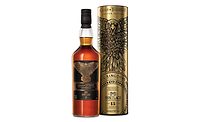The Switch: Changing it Up in Schools
By Elizabeth Fuhrman
When California lobbyists were fighting to remove soft drinks from their
school systems, they also were battling to keep a particular carbonated
beverage. The Switch, based in Richmond, Va., offered the school systems a
100 percent juice alternative with nutrients that were attractive to adults
and a bonus to entice kids – carbonation.
The Switch’s first move into California schools
came from a group of nutritionists, parents and legislators in the Santa
Barbara area, who saw and sampled the product in local retail outlets. The
group’s issue in removing soft drinks and other snacks was obesity in
the schools. “They were trying to get these kids off of
non-value-added sugar and salty products and get them into products that
are healthy,” says Bill Hargis, co-founder of The Switch.
Hargis acknowledges from an obesity standpoint that
juice is pretty high in calories. “The reality is that the best drink
for the human body is water,” he explains. “Not all this other
nonsense in the water, but just plain water. But kids haven’t been
drinking water.”
The California group approved water, milk, juice
drinks containing 50 percent or more juice, or isotonics that have less
than 40 grams of sugar for their schools. The Switch products more than met
the group’s requirements. But what The Switch also offers is vitamin
C, vitamin A and other vitamins, minerals and nutrients that products in
the schools were not providing.
The Switch’s moniker has been “get off the
hype” since its beginning in 2000. Hargis, who previously worked for
Guinness, says he got out of the beverage business about 12 years ago
because of a lack of innovation. Then five years ago, Hargis met up with
his partner, Mike Gilbert, who had the idea to carbonate 100 percent fruit
juice, but needed Hargis’s expertise in the beverage industry.
Hargis, in turn, cultivated the brand, image and packaging of The Switch.
“My concept was that if we had a distributor, a
retailer and a manufacturer invest, then I think we have something
solid,” Hargis recalls. “The first three guys we went to we got
to invest in the company.”
The Switch – whose name derives from a
conversation with skateboard fanatics talking about “switching things
up” – debuted in five flavors on retail shelves in Richmond.
Now with 11 flavors and national distribution, a couple major factors have
attributed to the growth of this five-year-old company. The first was
developing a hybrid system of distribution.
“When we first started, the big question was:
‘What is it?’” Hargis explains. “‘Is it a
juice? Is it a soda?’”
After the first presentation with a retailer asking
those questions, Hargis decided The Switch fit best in the new age beverage
section.
But growth really came because of a Richmond natural
health food retailer’s suggestion to attend a natural foods show. The
Switch eagerly was taken in by the health food industry because of its
all-natural ingredients and the fact that the product contains no
preservatives. Hargis wasn’t familiar with this industry and found it
very different than traditional direct store delivery. The Switch entered
into a broker network that gave it distribution in natural food outlets
across the United States. “The natural foods market was a market that
significantly helped our growth,” Hargis says.
On the DSD side, a California distributor approached
Hargis because he thought The Switch would be perfect for The Golden State.
The network was beginning to build when the group that was removing soft
drinks from schools discovered The Switch.
“When these bills started passing about taking
soft drinks out of schools, it just exploded our business,” Hargis
says. “Just about every school in the state of California either has
the product or is in the process of getting the product.”
The school business distribution prompted two other
firsts for The Switch: United States Department of Agriculture (USDA)
approval and the move to cans. One of the California school group directors
told Hargis that The Switch should get USDA approval to be in federally
funded school lunch programs. The USDA has a regulation against carbonated
beverages in the program, but Hargis submitted The Switch products, and the
USDA gave the company an exemption. From there, foodservice networks took
care of distributing the 12-ounce cans in three channels: over the counter,
a la carte and in vending. The Switch now appears in schools in California,
Connecticut, Maryland, Minnesota, Nevada, New Jersey, New York,
Pennsylvania and Washington.
With the school business growing steadily, The Switch
also has seen the national account business progress. This month, The
Switch will begin appearing nationally in Target stores, and the line is
available in Starbucks in Canada. “Those types of accounts have
really been helping us in not just awareness, but in samplings and with the
retailer across the street calling us so they can get their hands on the
product,” Hargis says.
Due to consumer and retailer demand to buy and sell
the product in bulk, The Switch soon will be available in four-packs. And a
new Tropical Punch flavor recently joined Orange Tangerine, Watermelon
Strawberry, Fruit Berry, Apricot Peach, Citrus Blend, Lemonade, Cranberry
Ginger, Black Cherry, Grape and Orange Mango.
“If you do what marketing and creating products
is suppose to be about, you create a product to fill a need in
society,” Hargis explains about The Switch. “The need has been
out there and when enough people tell us what
they want, let’s give them what they want.” BI


